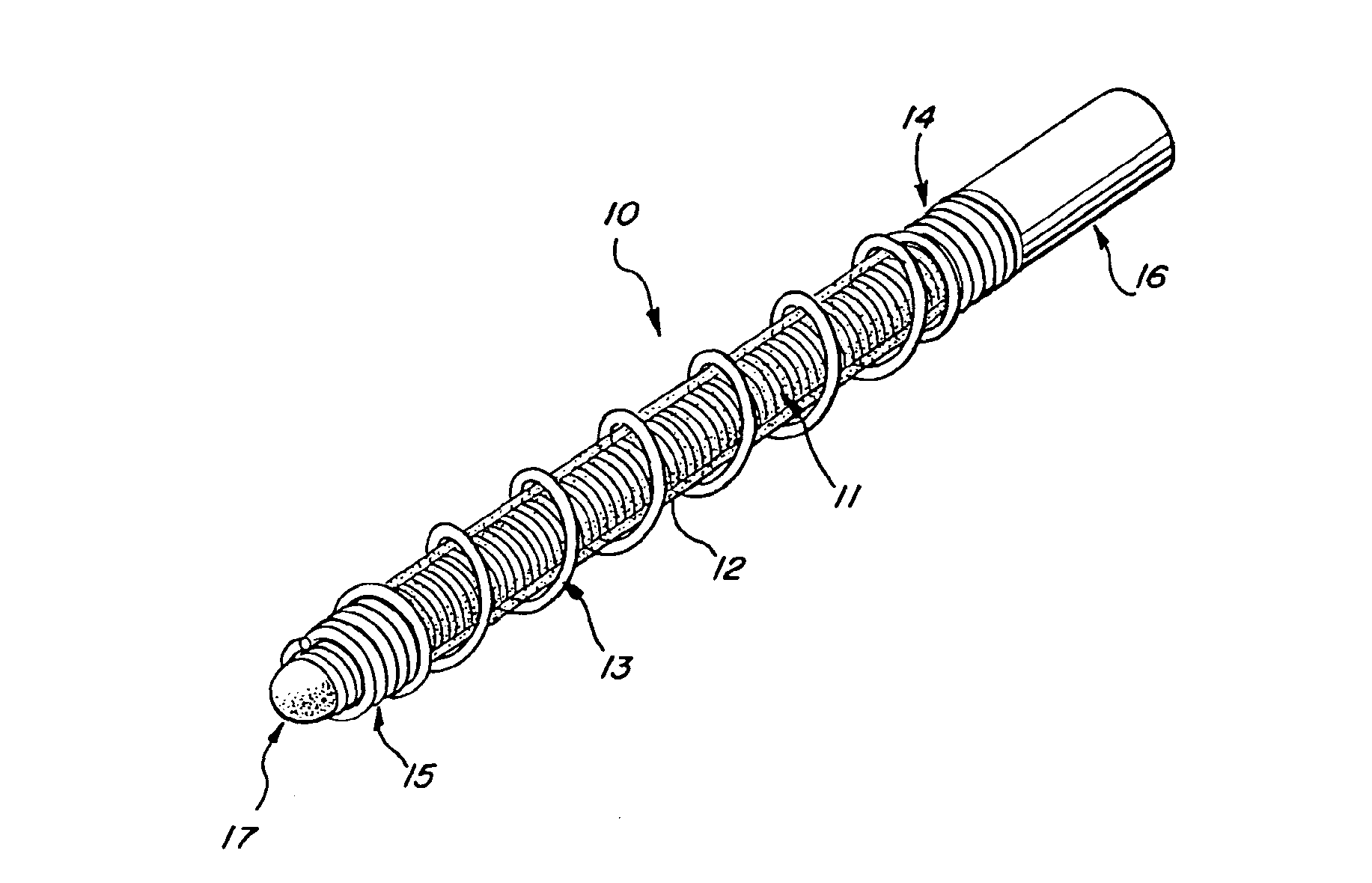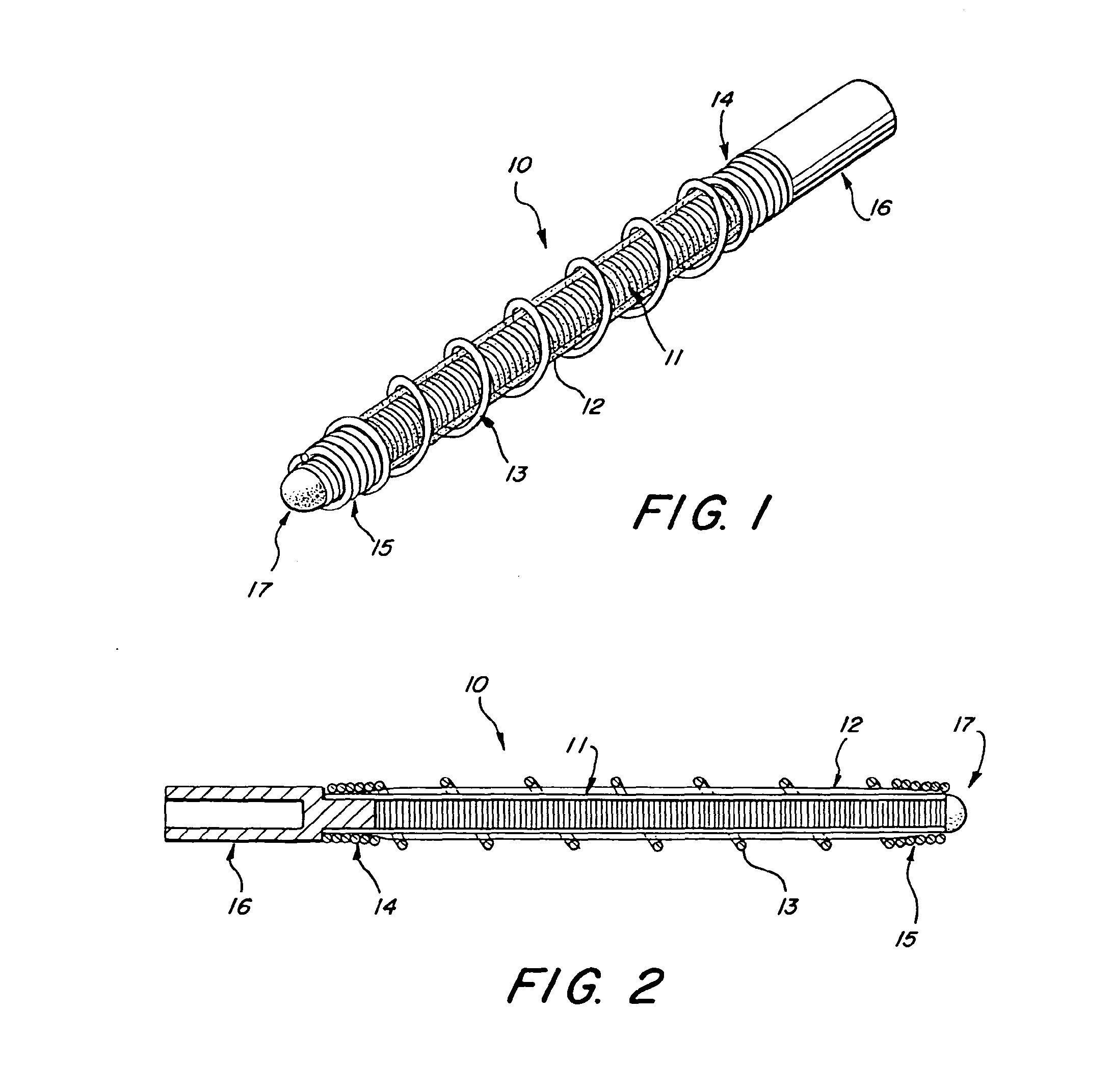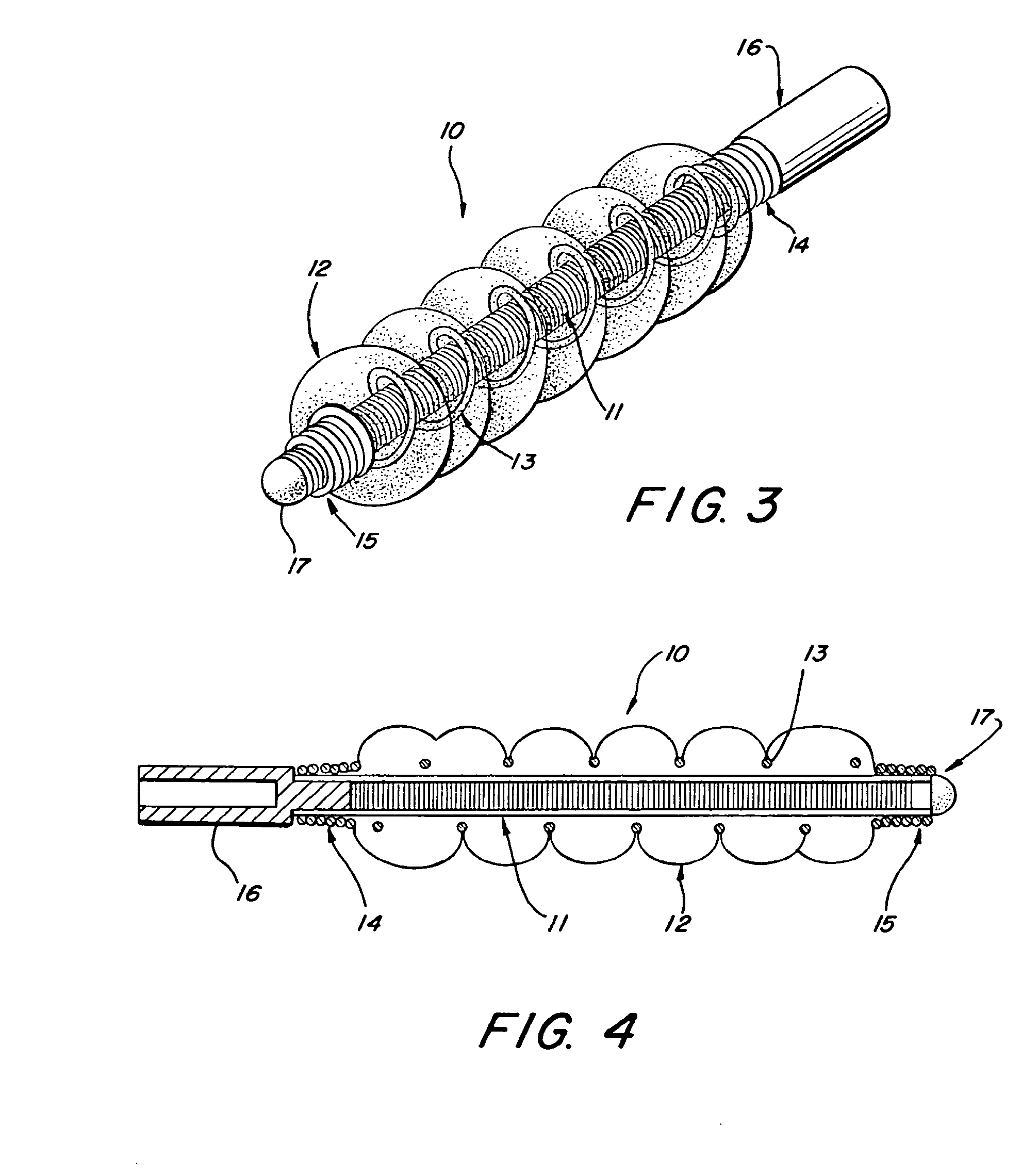Three Element Coaxial Vaso-Occlusive Device
a vaso-occlusive device and coaxial technology, applied in the field ofvasoocclusive devices, can solve the problems of decreasing and achieve the effects of reducing the contact area, reducing the aggregate friction, and reducing the resistance to device manipulation
- Summary
- Abstract
- Description
- Claims
- Application Information
AI Technical Summary
Benefits of technology
Problems solved by technology
Method used
Image
Examples
Embodiment Construction
[0020]Referring to FIGS. 1-4, a vaso-occlusive device 10, in accordance with a preferred embodiment of the invention, comprises three elongate, coaxial elements: an inner core element 11, a non-metallic intermediate element 12, and a non-expansile outer element 13 that covers at least a portion of the intermediate element. The intermediate element 12 is in intimate contact with both the inner element 11 and the outer element 13.
[0021]The inner element 11 is formed of a flexible, elongate filament or wire that is preferably made of a material that allows visualization under various medical imaging means, such as X-ray, MRI, or ultrasound. Preferably, the inner element 11 is formed from a length of wire made of any of various biocompatible, radiopaque metals, such as platinum, tantalum, tungsten, gold, titanium, nitinol, stainless steel, Elgiloy (cobalt-chromium-nickel), or other suitable alloys known in the art. Alternatively, it can be made from or include non-metallic materials, su...
PUM
 Login to View More
Login to View More Abstract
Description
Claims
Application Information
 Login to View More
Login to View More - R&D
- Intellectual Property
- Life Sciences
- Materials
- Tech Scout
- Unparalleled Data Quality
- Higher Quality Content
- 60% Fewer Hallucinations
Browse by: Latest US Patents, China's latest patents, Technical Efficacy Thesaurus, Application Domain, Technology Topic, Popular Technical Reports.
© 2025 PatSnap. All rights reserved.Legal|Privacy policy|Modern Slavery Act Transparency Statement|Sitemap|About US| Contact US: help@patsnap.com



